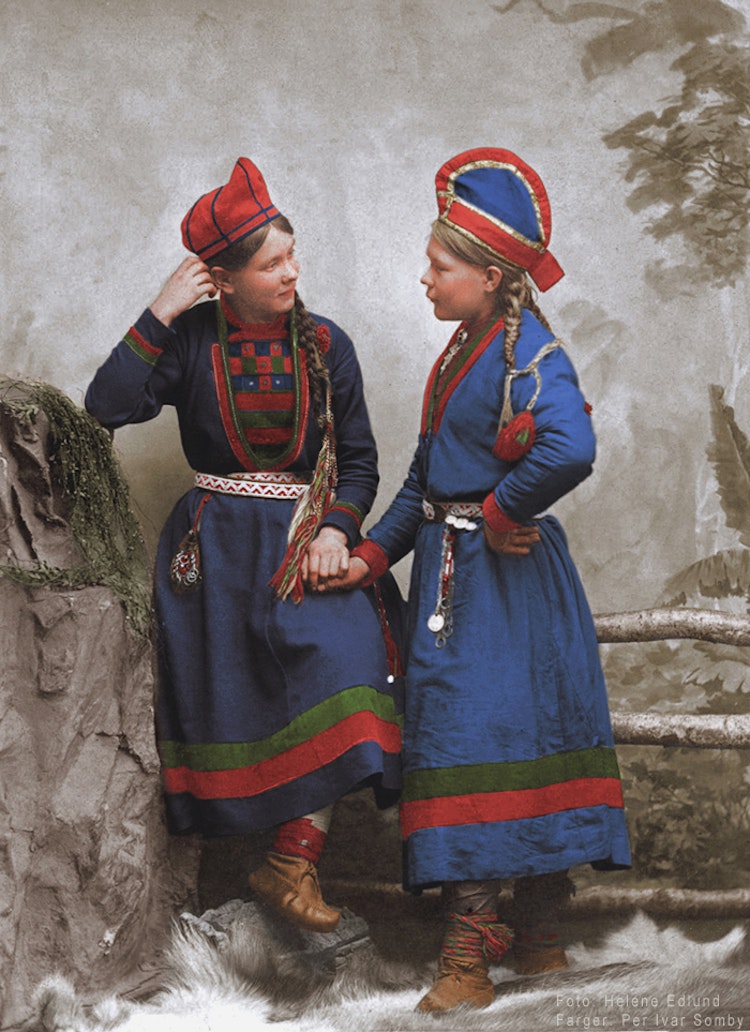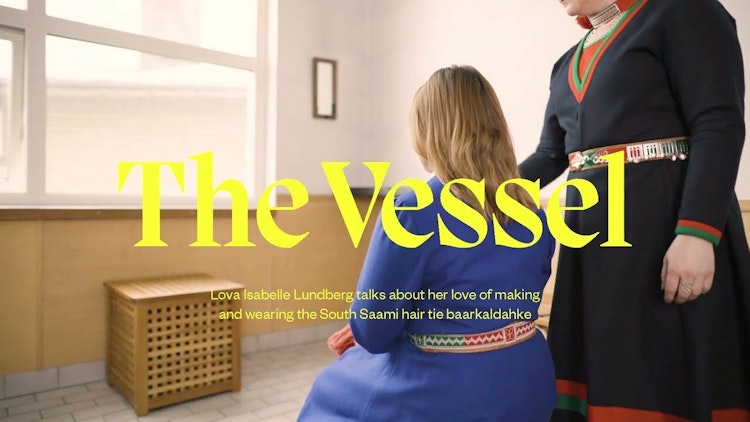Per Ivar Somby
While braiding baarkaldahke into a friend's hair Lova Isabelle Lundberg talks about her love for making baarkaldahke, a South Sami hair jewellery made with yarn, thread, tassels and glass beads.
Baarkaldahke is the word for South Sami hair ties. In the old days, the women would tie their long braids together on their backs so that they would not fall forward and be in the way during their daily work. Over time, this practice evolved and became more ornamental. The pieces used for tying have become increasingly elaborate and can have different colours and shapes.
In the South Sami areas, baarkaldahke is made from glass beads that are strung on strings of different lengths. The seedbeads often vary in size and may be as small as 1.2 millimeters. The tips of the baarkaldahke have tassels made of yarn. Wool yarn of different colours and lengths are frequently used. There are also baarkaldahke made of pewter thread lashed together with tassels or brass rings at the tips. In the Lule Sami area leather straps with larger size beads and textile tassels are also used.
I really enjoy making and wearing baarkaldahke. The way I see it, one is free to combine different colours and materials. I use materials such as glass, wool, or cotton because natural materials age nicely. During my time at Samij Åhpadusguovdásj (the Sámi Educational Centre), Lena Lundin Skott taught me how to make baarkaldahke. Since then I have crafted a large number of baarkaldahke, both to sell and for personal use. In addition, I have taught several classes in the crafting of baarkaldahke.


There is hardly anything else one can wear that makes one feel as powerful as wearing baarkaldahke. My posture becomes straighter and I feel so elegant.
It is somewhat easier to wear baarkaldahke if one’s hair is a little bit longer, so that is why I have long hair today. There is hardly anything else one can wear that makes one feel as powerful as wearing baarkaldahke. My posture becomes straighter and I feel so elegant. It also makes me feel connected to my history, culture, and heritage. Today, the use of baarkaldahke is not widespread—it has been somewhat forgotten the last decades—but I think I can see a growing interest and that it is being used more and more.
The fun part about crafting baarkaldahke is that you can use your creativity when you assemble beads, colours, yarns, and different lengths and numbers of tassels. I like the idea of using what you've got, the materials that inspire you, and the things you like. That is why I think that the baarkaldaahke, at its core, consists of a traditional form and foundation but reflects the time in which we live, as well as the person who made it. It is a living cultural legacy.
